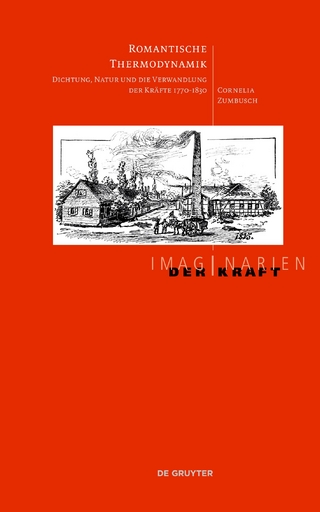
Grammar of Poumai Naga (Poula)
Brill (Verlag)
978-90-04-43053-2 (ISBN)
This is the first complete description of Poumai Naga (Poula), an understudied language spoken in Manipur in northeast India. Poumai Naga belongs to the Angami-Pochuri clade of the Trans-Himalayan family. The book comprises all aspects of the language, including phonology, lexicon, morphosyntax, syntax and discourse. This work employs the tone periodic table, an innovative method used for documenting tone languages. A bilingual lexicon and a collection of fully-analysed texts are provided in the appendices. This research work represents a substantial contribution to the field of comparative Trans-Himalayan linguistics.
Sahiinii Lemaina Veikho, Ph.D. (2019), University of Bern, is a researcher specializing in Angami-Pochuri languages of the Trans-Himalayan family. He has published several articles on Trans-Himalyan languages spoken in northeast India.
Acknowledgements
List of Figures and Tables
Abbreviations
1 Introduction
1.1 The Language
1.2 The People
1.3 History of the Poumai Naga
1.4 The Social System of the Poumai Naga
1.5 Genetic Classification
1.6 Previous Work Done on Poula and Related Languages
1.7 Organisation of the Grammar
1.8 Theoretical Framework and Data Collection
2 Sound System
2.1 Overview
2.2 Syllable Structure
2.3 Consonants
2.4 Vowels
2.5 Morphophonology
2.6 Word-Hood
2.7 Summary
3 Tone documentation
3.1 Overview
3.2 Tonemes in Poula
3.3 Phonetic Realisation of the Tonemes
3.4 Noun Morphotonology
3.5 Verb Morphotonology
3.6 Tone Pattern in Particles
3.7 The Tone Periodic Table
3.8 Illustration of the Poula Tone Periodic Table
3.9 Corpus
3.10 Summary
4 Word Classes
4.1 Overview
4.2 Content Words
4.3 Derived Modifiers
4.4 Functional Words
4.5 Summary
5 Expressive Words
5.1 Overview
5.2 Acoustic Symbolic Words
5.3 Articulatory Symbolic Words
5.4 Systematic Patterned Words
5.5 Prosody in Expressive Words
5.6 Summary
6 Noun Phrases
6.1 Overview
6.2 Components of the Noun Phrase
6.3 Noun Phrase Coordination
6.4 Appositions
6.5 Asyndetic Coordinations
6.6 Embedding Noun Phrases
6.7 Summary
7 Argument Marking
7.1 Overview
7.2 Argument Markers
7.3 Core Argument Markings
7.4 Summary
8 Nominalisation and Relative Clauses
8.1 Overview
8.2 Nominalisers
8.3 Derivational Nominalisation
8.4 Clausal Nominalisation
8.5 Relative Clauses
8.6 The Prosody of Nominalisation
8.7 Summary
9 Predicate Structure
9.1 Overview
9.2 Components of the Predicate Structure
9.3 The Causative pai-
9.4 Modifiers
9.5 Head
9.6 Verb Particles
9.7 Negation in Verbs
9.8 Tense and Aspect
9.9 Modality
9.10 Sentence Final Markers
9.11 Summary
10 Clause Types
10.1 Overview
10.2 Verbal Clauses
10.3 Nonverbal Clauses
10.4 Complement Clauses
10.5 Imperative Clauses
10.6 Interrogative Clauses
10.7 Summary
11 Clause Combining
11.1 Overview
11.2 Simple and Complex Clauses
11.3 Clause Linking Morphemes of Dependent Nonfinite clauses
11.4 Clause Linking Morphemes of Dependent Finite Clauses
11.5 The Sequential Marker -ly
11.6 The Quotative -rwù
11.7 Serial Verb Constructions
11.8 Summary
12 Discourse Particles
12.1 Overview
12.2 The Particle sw
12.3 The Particle w
12.4 The Particle wm
12.5 The Particle dwi
12.6 The Particle e
12.7 The Particle -khai
12.8 The Particle te
12.9 The Particle nga
12.10 The Particle o
12.11 The Particle -ma
12.12 The Particle swshokozw
12.13 The Particle ty
12.14 The Attention Particle shiva
12.15 The Particle ‘That Is’
12.16 The Particle zyko
12.17 The Particle thwutimò
12.18 The Particle sa
12.19 The Comparatives Particles
12.20 The Conditional -ko
12.21 The Non-specific tara
12.22 The Particle -laí Expressing certainty
12.23 Particles Expressing Probability
13 Text Samples
13.1 The Story of Liipeirou (Lwpwiru)
13.2 The Story of Ro
13.3 The Story of Chiiho
13.4 The Story of Dziilai Chína
13.5 The Story of Ziile Mou ‘Rice Seedling’
13.6 Narration on the Ritual Ki
13.7 A Short Narration about the Place Call khia
13.8 Conversation
14 List of Words
References
Index
| Erscheinungsdatum | 24.09.2021 |
|---|---|
| Reihe/Serie | Brill's Tibetan Studies Library / Languages of the Greater Himalayan Region ; 25 |
| Verlagsort | Leiden |
| Sprache | englisch |
| Maße | 155 x 235 mm |
| Gewicht | 1164 g |
| Themenwelt | Geisteswissenschaften ► Sprach- / Literaturwissenschaft ► Anglistik / Amerikanistik |
| Geisteswissenschaften ► Sprach- / Literaturwissenschaft ► Sprachwissenschaft | |
| ISBN-10 | 90-04-43053-9 / 9004430539 |
| ISBN-13 | 978-90-04-43053-2 / 9789004430532 |
| Zustand | Neuware |
| Haben Sie eine Frage zum Produkt? |
aus dem Bereich


